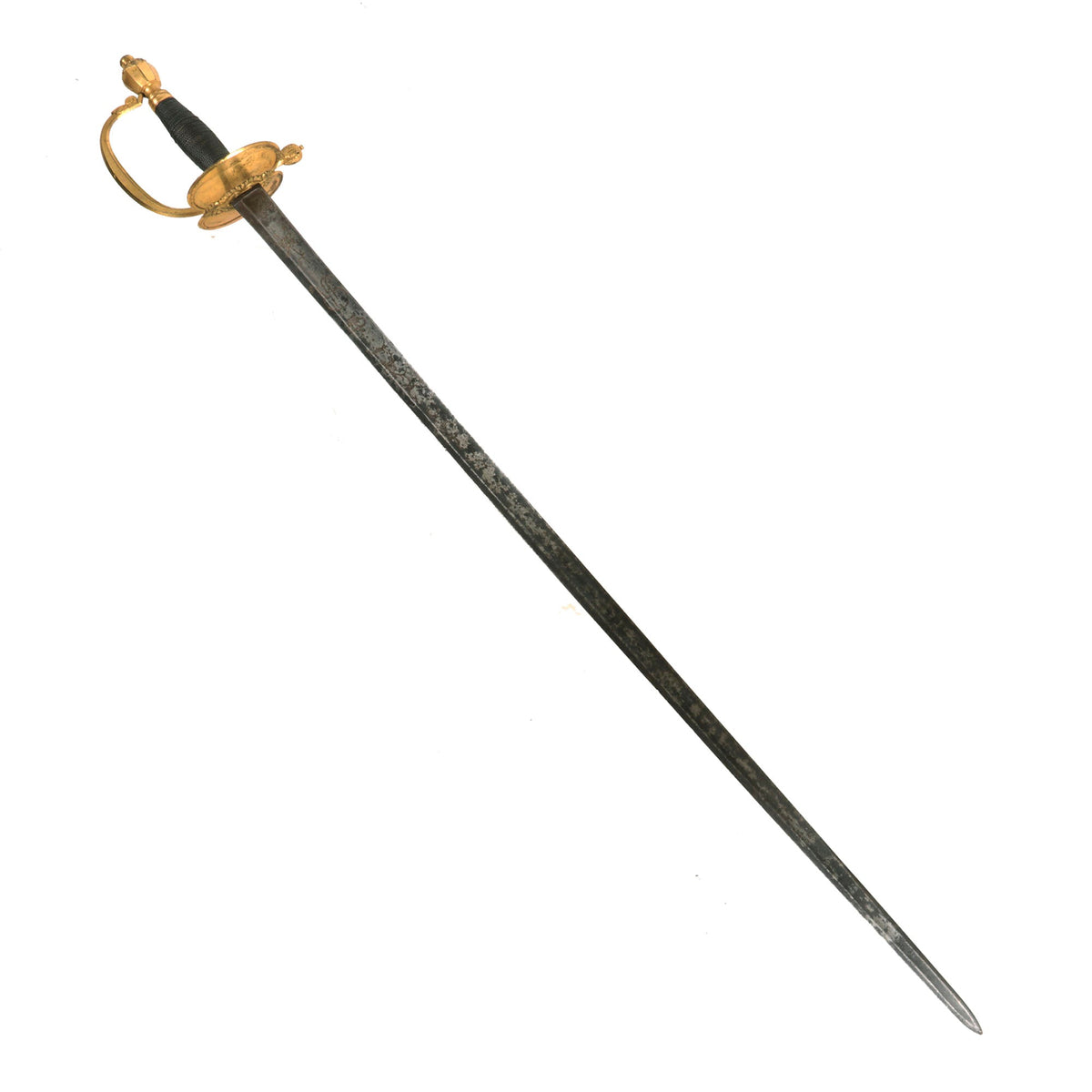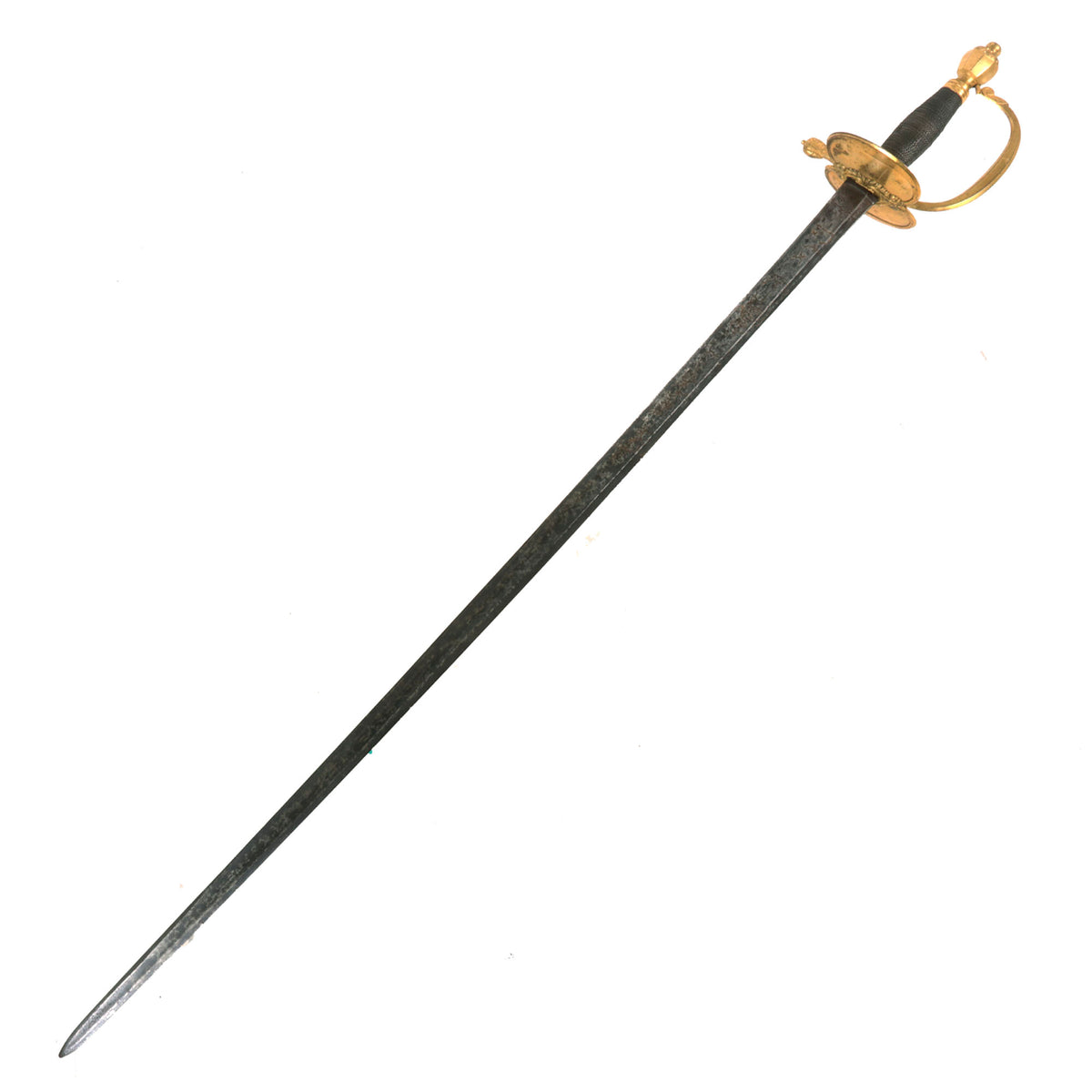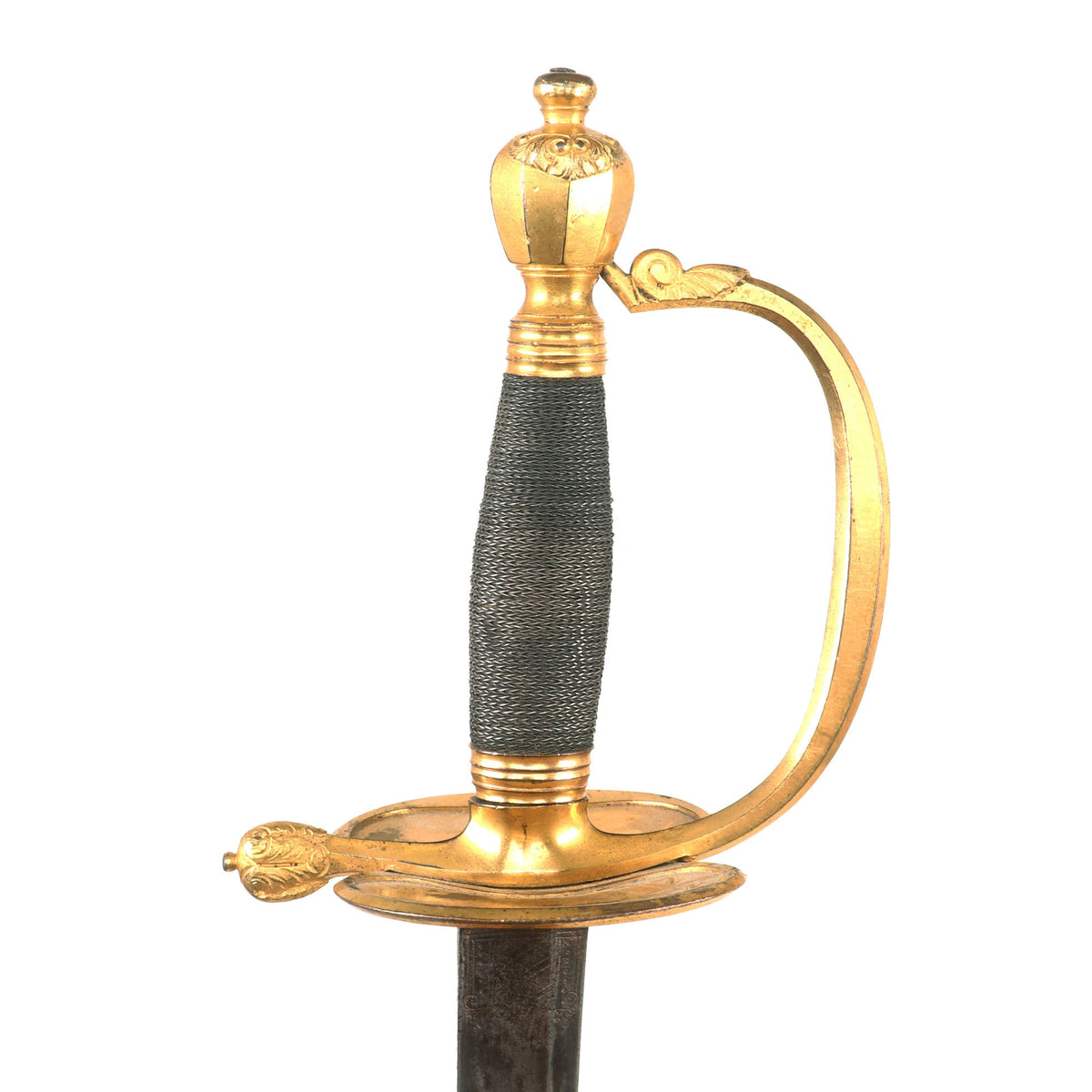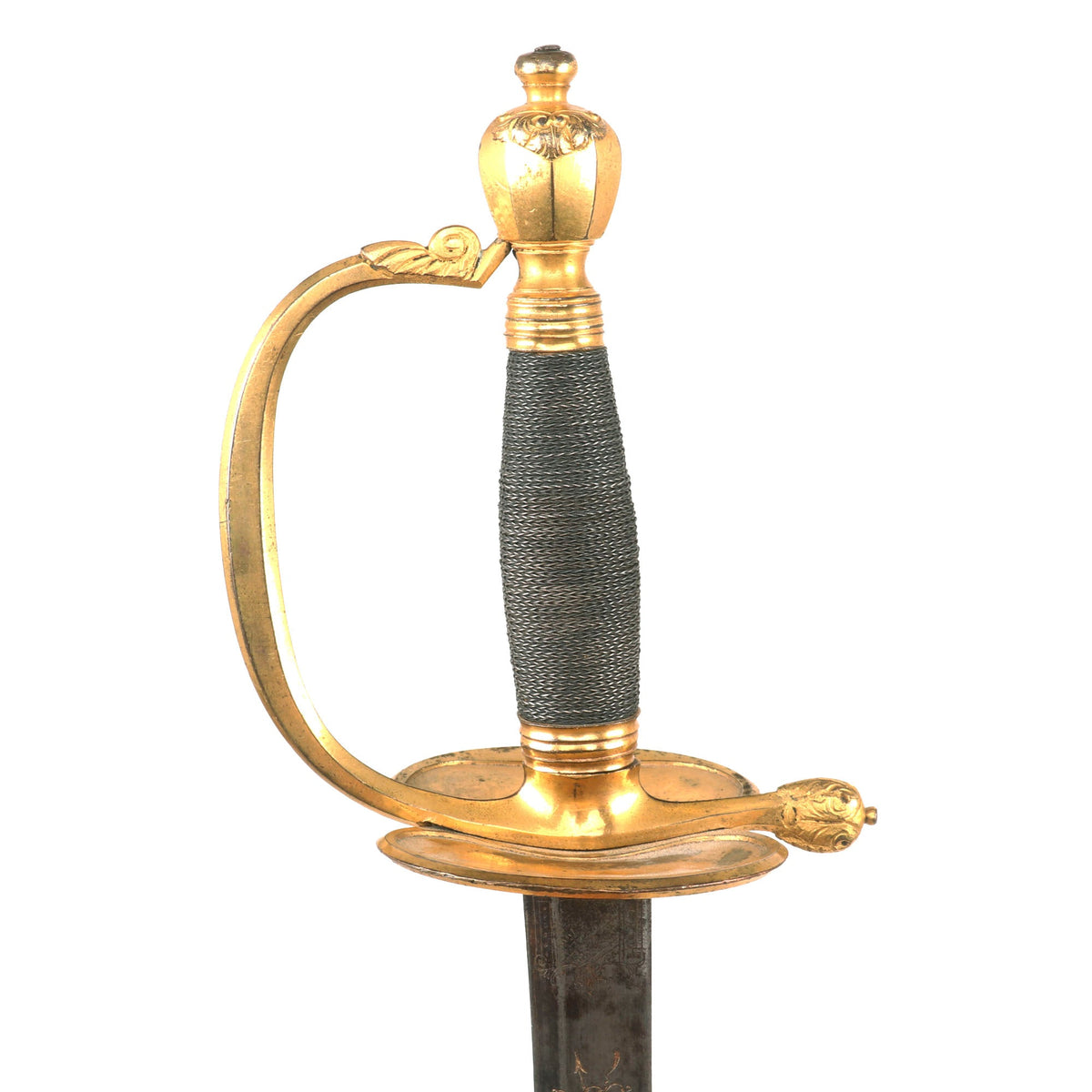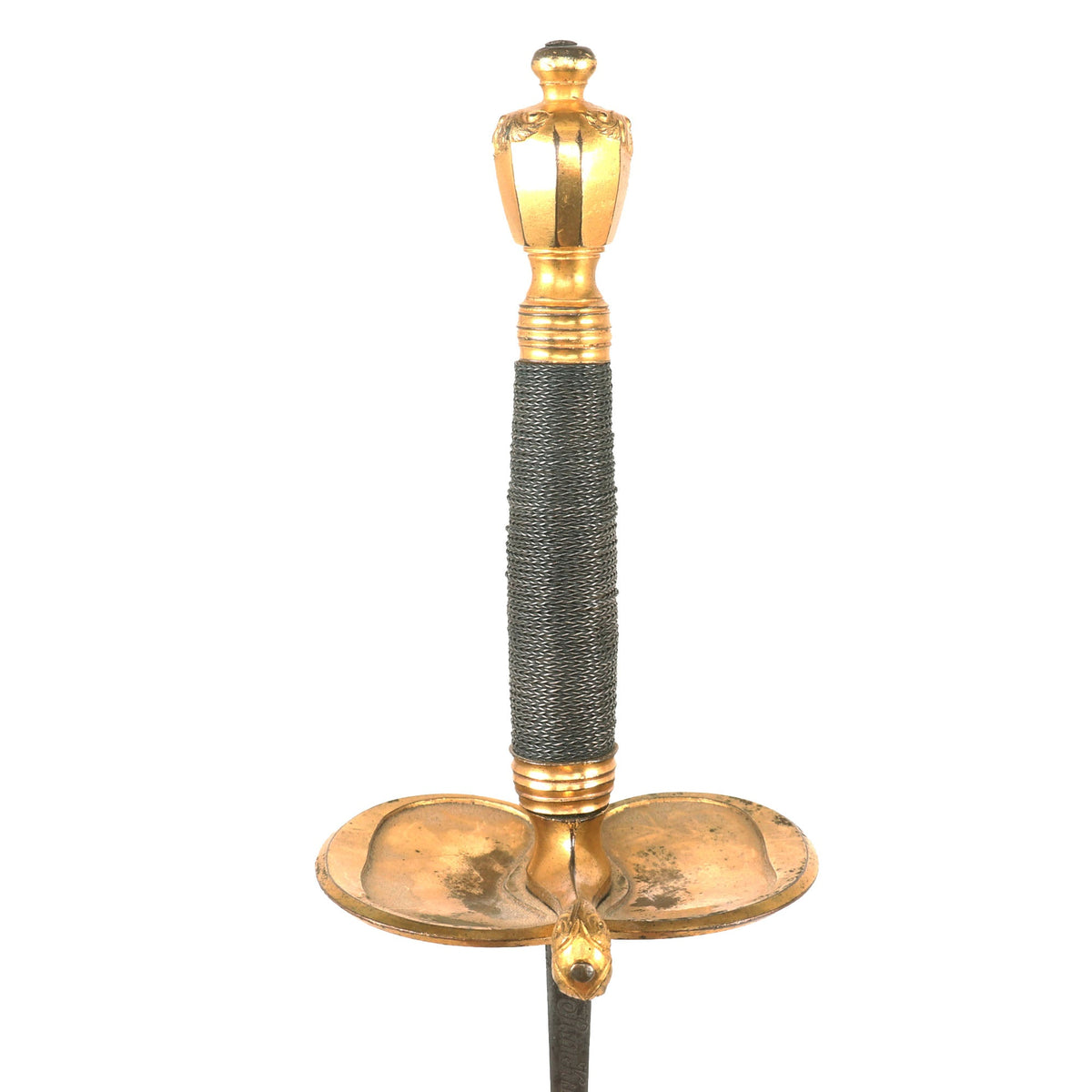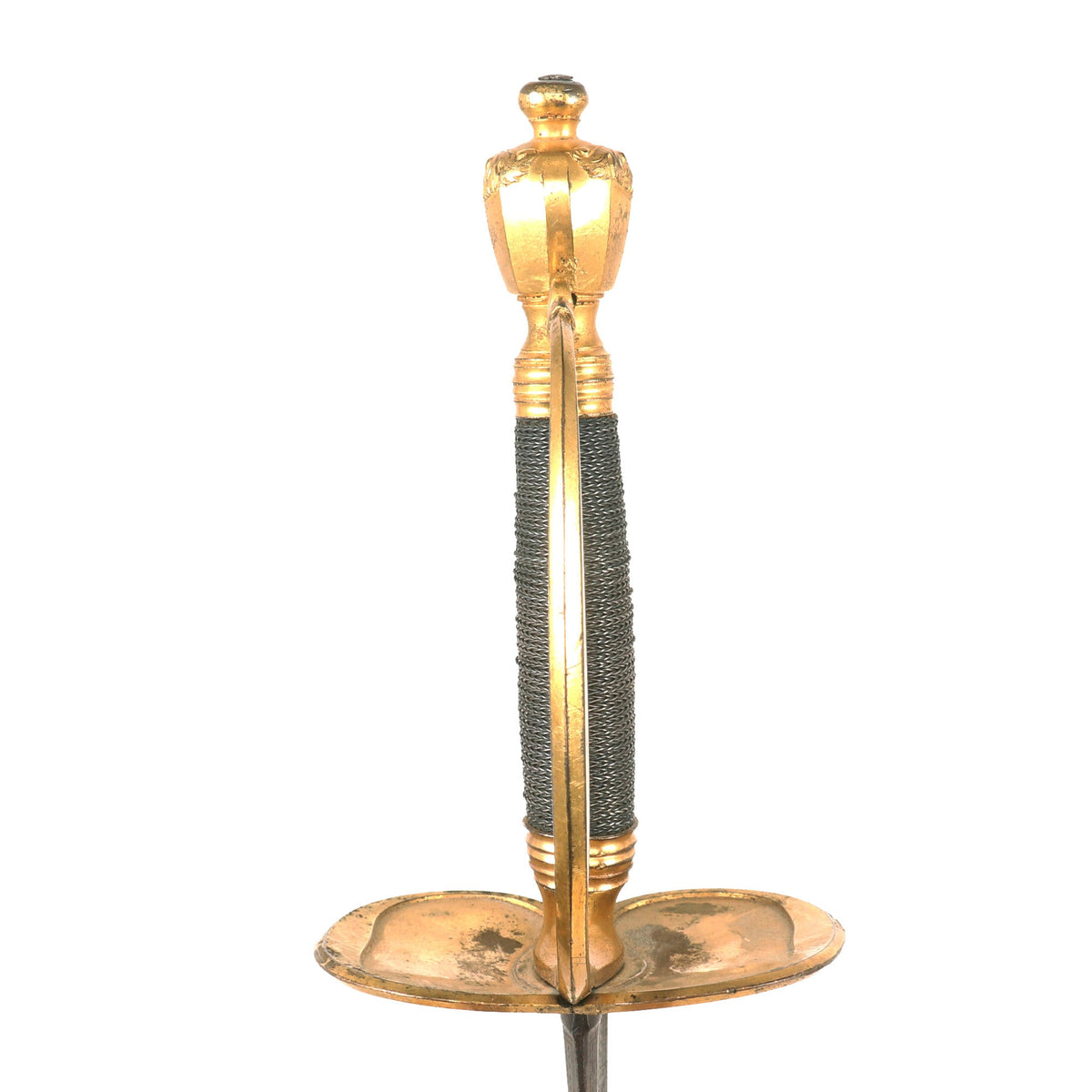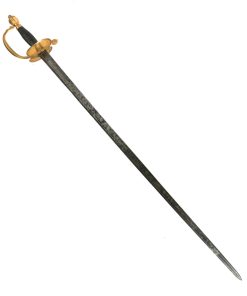Original British War of 1812 Era Officer’s Pattern 1796 Spadroon with German Engraved Blade by Johann Justus Runkel of Solingen Original Items
$ 795,00 $ 238,50
Original Item: Only One Available. This is a fantastic example of a British Officer’s Pattern 1796 Spadroon sword. The sword, though offered without a scabbard, is in wonderful condition and is one of the first spadroons we have been able to offer. This would be a welcomed addition to any late-18th/Early 19th Century British collection!
A spadroon is a light sword with a straight-edged blade, enabling both cut and thrust attacks. This English term first came into use in the early 18th century, though the type of sword it referred to was in common usage during the late 17th century. They were primarily used as a military (army & navy) sidearm in the late 17th and early 18th centuries, and for officers and NCOs in the latter part of the 18th and early 19th centuries. The type of sword also saw widespread use across Europe and America, though the term ‘spadroon’ is unique to the Anglophone world.
Spadroon is a term used to categorize a type of sword that is in between a small sword (which thrusts only), and the heavier-bladed broadsword. They may have single- or double-edged blades, and hilt types ranging from a simple stirrup guard, to double shells, and even further protection to the sides of the hand.
The 1796 pattern sword (spadroon) was the first British infantry sword to truly follow a pattern and be controlled by strict parameters. It followed the same regulation blade outlined in 1786, but now also featured a regulation hilt. A brass gilded double shell guard with knuckle bow and urn shaped pommel. A guard that was in fact very similar to many small swords of the day, a fact that leads to them often being mistaken for one another. The 1796 spadroon was not a copy of the small sword, but in fact one in a long lineage of double shell military swords that had been in use in Britain from the late 17th century, as well as in widespread use across Europe. The exact ornamentation of the 1796 was indeed a copy of those carried by the Prussian Frederick the Great and his officers. One shell was often hinged (not on this example) so that the sword sat flush when wearing against the uniform, but this was not part of the regulation, and at the discretion of the purchaser.
It was widely disliked, as is noted in many sources at the time. Though it is important to note that officers had to purchase their own swords, and so whilst many 1796 pattern spadroons are poor weapons, it is entirely possible to specify and make a successful and effective sword within the parameters of the regulation. Therefore, decent fighting weapons do exist among surviving examples of this pattern type, as well as many that range from adequate to poor fighting weapons. Attempts to replace this spadroon with a robust saber were only partially successful. With an infantry pattern introduced in 1803, and many non-regulation sabres carried both within and against the regulations of the day. Despite this, the 1796 spadroon lived on until it was replaced in army service in 1822 by a new model of saber, and ended the use of the Spadroon in British army service, and in Naval use in 1827 (also by a new saber pattern).
This example is a gorgeous high-end officer’s example with a German-imported engraved blade from Johann Justus Runkel of Solingen. The blade is engraved on both sides, with the British crown & GR with foliage on one side and a great crest on the other. The spine is engraved J J RunKel Solingen. The blade is in good worn condition with some heavy pitting and oxidation near the tip, but the engraving is all still very clear & gorgeous. There are a few chips in the blade along the edge near the tip as shown. The hilt is a bit loose on the tang but all the pieces are present & the hilt is in fantastic condition, the grip still fully silver wire-wrapped, although that is a bit loose as well. A fantastic wall hanger sword from the War of 1812 era.
This example is in great shape overall, and comes ready for further research and display.
Specifications:
Blade Length: 32½”
Blade Style: Spadroon
Overall length: 39⅛”
Crossguard: 4 ¼”
Fast Shipping with Professional Packaging
Thanks to our longstanding association with UPS FedEx DHL, and other major international carriers, we are able to provide a range of shipping options. Our warehouse staff is expertly trained and will wrap your products according to our exact and precise specifications. Prior to shipping, your goods will be thoroughly examined and securely secured. We ship to thousands clients each day across multiple countries. This shows how we're dedicated to be the largest retailer on the internet. Warehouses and distribution centres can be located throughout Europe as well as the USA.
Note: Orders with more than one item will be assigned a processing date depending on the item.
Before shipping before shipping, we'll conduct a thorough inspection of the items you have ordered. Today, the majority of orders will be delivered within 48 hours. The delivery time will be between 3-7 days.
Returns
The stock is dynamic and we cannot completely manage it because multiple stakeholders are involved, including our factory and warehouse. So the actual stock may alter at any time. It's possible that you may not receive your order once the order has been made.
Our policy is valid for a period of 30 days. If you don't receive the product within 30 days, we are not able to issue a refund or an exchange.
You can only return an item if it is unused and in the same state as the day you received it. You must have the item in its original packaging.
Related products
Uncategorized
Uncategorized
Armored Burgonet Helmet & Polearm from Scottish Castle Leith Hall Circa 1700 Original Items
Uncategorized
Uncategorized
Uncategorized
Uncategorized
Uncategorized
Armoured Fighting Vehicles of the World: AFVs of World War One (Hardcover Book) New Made Items
Uncategorized
Uncategorized
Uncategorized
Uncategorized
Uncategorized
Australian WWII Owen MK1 Machine Carbine SMG Custom Fabricated Replica with Sling Original Items
Uncategorized
Uncategorized
Uncategorized
Uncategorized
Band of Brothers ORIGINAL GERMAN WWII Le. F.H. 18 10.5cm ARTILLERY PIECE Original Items
Uncategorized
Uncategorized
Uncategorized
Uncategorized
